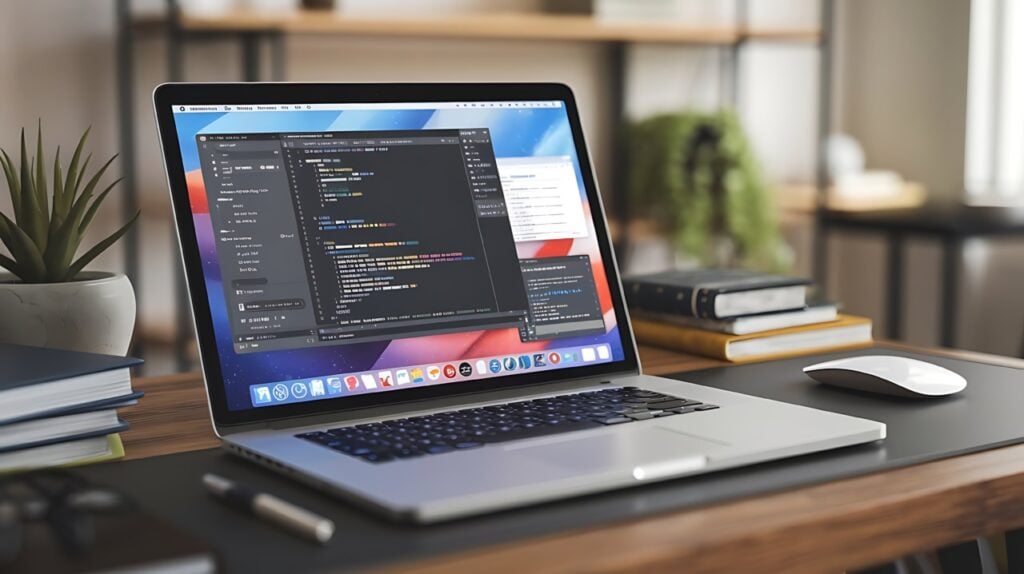Apple users have always believed that their devices are very safe and that they can hardly fall victim to cybercrime. The macOS operating system does have good security, but not even this is unbeatable. In recent years cyber criminals have increased in sophistication such that Macs are no longer left out. If you still believe that your Mac cannot be attacked by malicious software, then you are greatly mistaken.
The Myth of Mac Invulnerability
The belief that Macs are intrinsically safe comes from the fact that Apple is known for producing high quality products, and its operating system, macOS, has always had a smaller market share compared to Windows. Malware developers directed their attention towards the numerous Windows users for many years, which is why they left Macs alone for the most part.
But that’s changing. As Macs have grown in popularity, especially among professionals, they’ve become a bigger target. And the truth is, Macs are not immune to viruses, malware, or hackers. Even with built-in security features like Gatekeeper and FileVault, extra protection from reliable software, like Moonlock antimalware, is becoming essential to stay ahead of growing threats.
Why Your Mac Isn’t Bulletproof
1. macOS-Specific Malware Is Growing
There is a great increase in the malware menaces that are aimed at macOS. Just in 2024, there were accounts of some sophisticated ransomware attacks on Apple users only. Such types of malicious software capitalize on weaknesses within macOS for purposes of robbing important data like passwords, banking details, and even iCloud data.
Despite Apple’s regular updates of its software to cover weaknesses, hackers never stop creating fresh methods of overcoming these protections.
2. Social Engineering Exploits
It is possible for social engineers to attack you even if the software in your Mac is safe. Human behavior is what phishing emails, fake login pages, and other scams take advantage of, not weaknesses in macOS. To deceive users into disclosing their Apple ID login information or putting malware, hackers make use of well-designed messages.
3. Over-Reliance on Apple’s Built-in Security Features
Features like Gatekeeper, XProtect, and FileVault are excellent tools for protecting your Mac. However, relying solely on these built-in features is a mistake. Gatekeeper, for instance, only scans apps downloaded from the internet and can sometimes fail to detect more sophisticated malware.
Moreover, these tools don’t protect against phishing attacks, network vulnerabilities, or zero-day exploits (previously unknown security flaws).
4. Public Wi-Fi and Network Risks
Many Mac users assume that connecting to public Wi-Fi is safe because of their device’s reputation for security. However, this couldn’t be further from the truth. Without a VPN (Virtual Private Network), your internet traffic can easily be intercepted by hackers, putting sensitive data like passwords and credit card information at risk.
5. Outdated Software
Despite the fact that many users postpone installing macOS updates because they believe it is not important and may cause inconvenience, the practice leads to exposure of devices to known vulnerabilities already corrected by Apple in later versions. These out-of-date operating systems are very vulnerable and so cyber criminals find them to be easy prey.
Real-Life Mac Attacks You Should Know About
To illustrate the growing threat to Macs, let’s look at a few recent examples:
-
Silver Sparrow (2021): This malware infected around 30,000 Macs worldwide, including M1 chip devices. It exploited macOS installation processes and remained dormant, waiting to execute harmful code.
-
XLoader (2022): A cross-platform malware tool that infected Macs through malicious Word documents. Once installed, it allowed hackers to steal passwords and remotely control the system.
-
CloudMensis (2023): A spyware campaign targeting macOS users. It exploited vulnerabilities to steal files, monitor keystrokes, and access private data stored in iCloud.
These examples prove that Macs are no longer exempt from the threats that Windows users have faced for years.
How to Protect Your Mac
While no system is invulnerable, there are steps you can take to significantly reduce your Mac’s risk of being compromised:
-
Install updates as soon as they’re available. These updates often contain critical security patches to address newly discovered vulnerabilities.
-
Install a reliable antivirus program designed for macOS. Tools like CleanMyMac can provide an additional layer of defense.
-
By using 2FA, you can secure all your accounts, including the Apple ID. Hackers will not easily get into your different accounts with this, even when they break through and use the password.
-
Use a VPN to encrypt your internet traffic whenever you connect to public Wi-Fi. This prevents hackers from intercepting your data.
-
Before entering any sensitive information, it is important to first verify emails, links, and login pages. If anything seems wrong, you shouldn’t continue.
-
Have a recent copy of your files using Time Machine or any other backup solution. This is crucial in case your system is compromised by ransomware or other threats.
-
Proceed to System Settings> Privacy & Security and check on the applications that can have access to your microphone, camera or files; then remove permission for any applications that are irrelevant.
Final Thoughts
The false sense that Macs are not prone to online attacks may result in complacency, something that hackers take advantage of. With the increase in popularity of Apple products, they are equally becoming appealing targets for cyber criminals.
Even though no system is perfect, it is possible to mitigate most security threats by being aware and proactive about securing your Mac. It should be noted that every Mac is vulnerable to some extent or the other. Nevertheless, being cautious as well as following the right procedures will keep you safe.
Caroline is doing her graduation in IT from the University of South California but keens to work as a freelance blogger. She loves to write on the latest information about IoT, technology, and business. She has innovative ideas and shares her experience with her readers.






